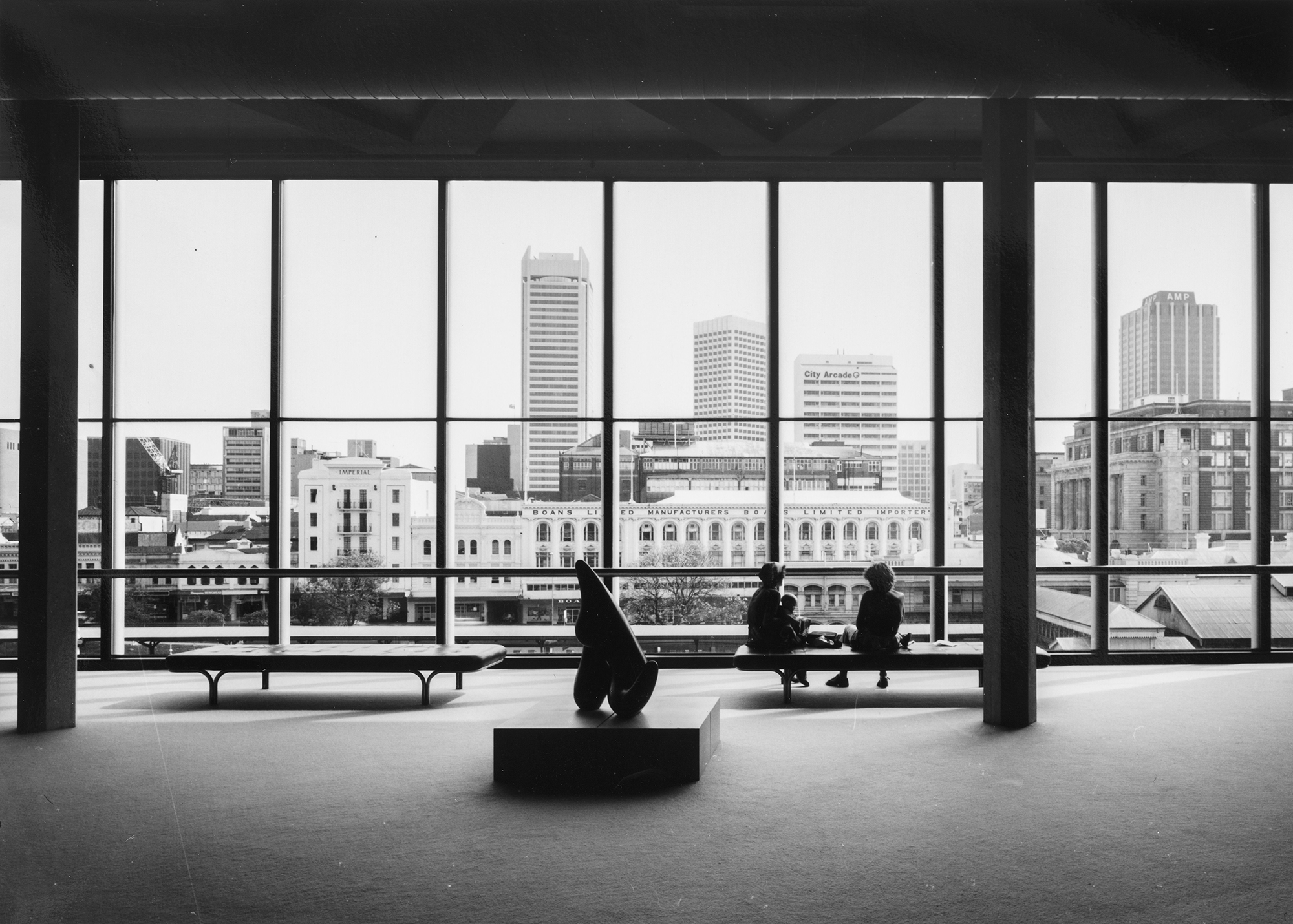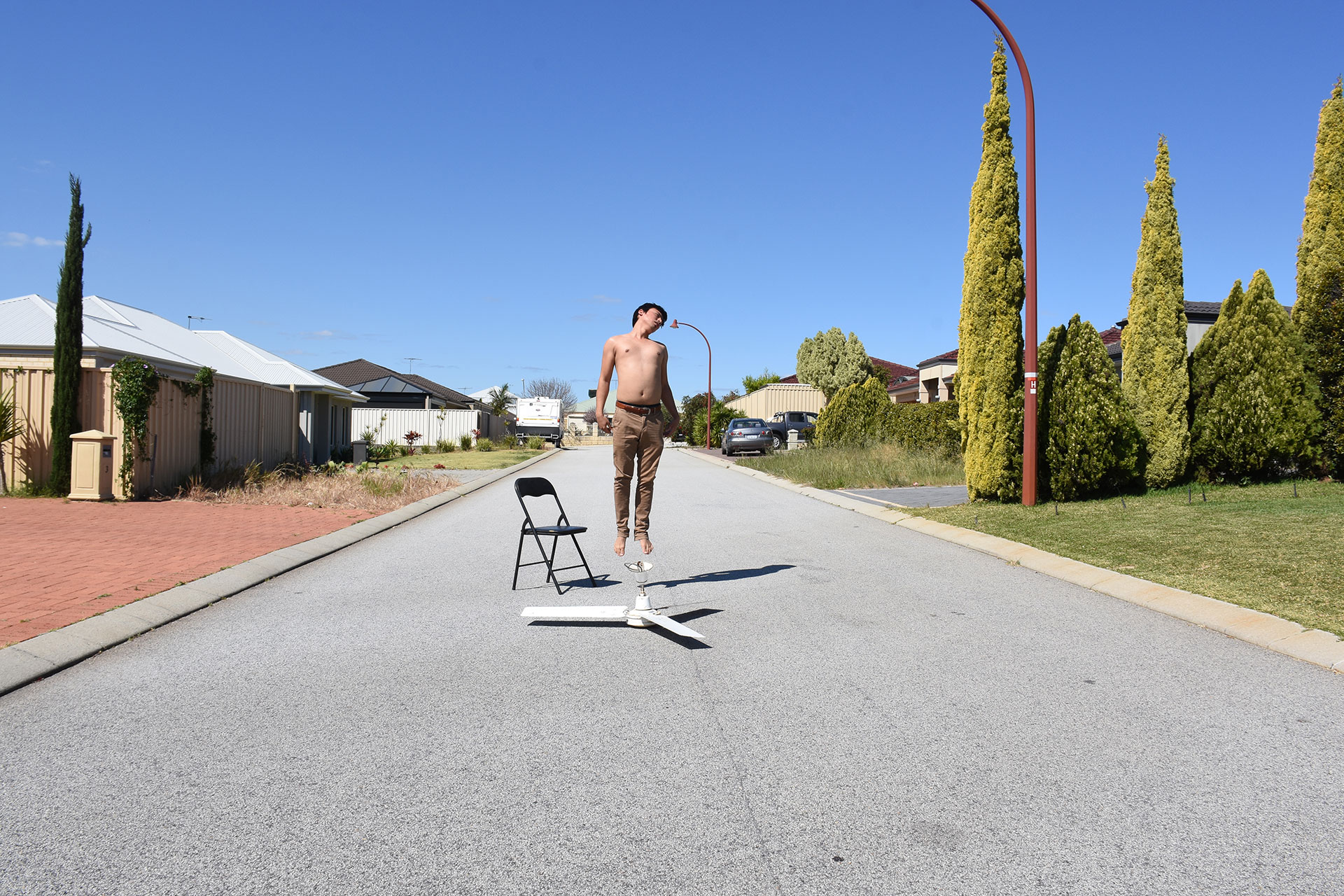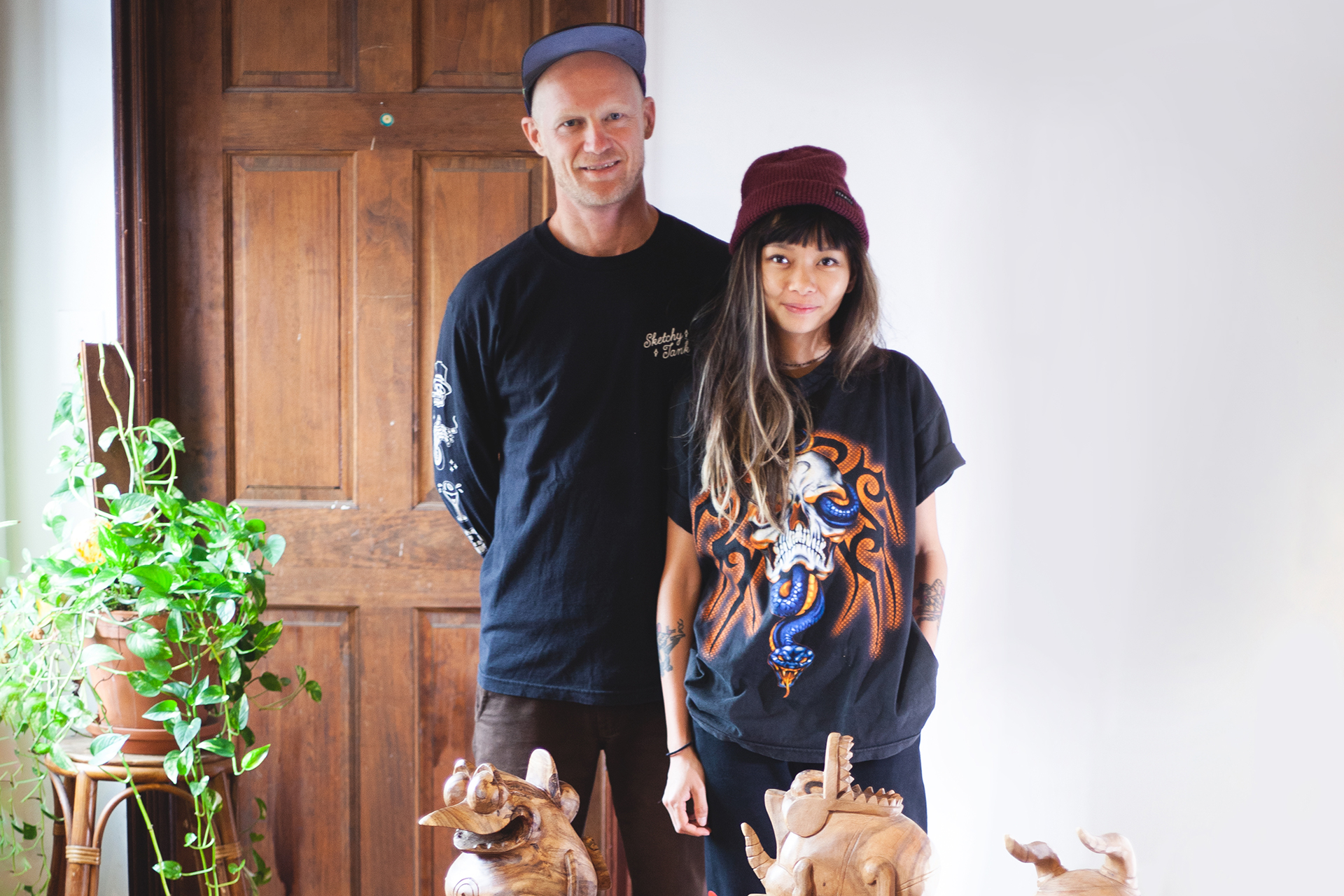Eveline Kotai: Looking Out/Back/In
A large-scale installation and a participatory work combine to make an all-ages play space, inviting audiences to explore relationships between architecture, bodies and space.

I AM TALKING to Eveline Kotai about her work in development Looking Out/Back/In. Kotai is known for making new works by cutting up and collaging her old paintings of nature. She talks about drawing change and observing change, how she originally thought of painting as a way to catch a moment in time. “But you can’t do that,” she says, “that moment is part of a continuum.”
The overarching concept of Looking Out/Back/In responds to the view from a vast window inside AGWA that has been covered up for decades. There is a monochrome photograph from 1979 showing the gallery as it was then. Two women and a baby sit facing each other on a divan in the middle distance. Through the window, the city can be seen — cut into rectangles by the glazing bars and gramed by the building’s iconic concrete.
Kotai is remaking this image as a large-scale multimedia work, combining new drawings with collage of old monochrome works that relate to her family’s Hungarian heritage and their journey to this country. She remembers the time and place of the photograph, of going to the CBD with her mum to find Hungarian sausage and coffee; things you couldn’t find outside the city back then. Looking closely at the developing work, I see a city made by marks, words and experiences become abstract; all of it threaded together by the personal.
“We’ve all been conditioned to four edges and a frame, and what’s inside. It’s nice to turn that inside out.”
There are only a handful of tall buildings in the image and I think about how Boorloo/Perth is a city that most of us know best at ground level. The vertical towers that now dominate its silhouette aren’t accessible to the general public. The uncovering of the gallery’s vast window and the redevelopment of its rooftop aligns with other spaces opening. Perhaps this is part of a greater social impulse: the city belongs to the people; access to the high spaces should be for everyone. Seeing it in one vista allows us to consider how it has grown, what it is.
When asked what a gallery is for, Kotai answers: “We’ve all been conditioned to four edges and a frame, and what’s inside. It’s nice to turn that inside out.” The intention to invert art experiences is part of this work. Alongside the collage, Kotai has collaborated with Lilly Blue—who heads up learning and creative research at the gallery—to create a collection of sculptural elements that visitors can use to build their own city-like creations as they look out through the window. Kotai relates these to sand mandalas.
I query what the right verb would be to describe the invitation to the public—to play, experiment, create—but she wants those of us visiting to be absent of words, to see, and “to familiarise yourself with that sense of permission [that an artist feels]”.
First published in the print publication The View From Here in October 2021.

